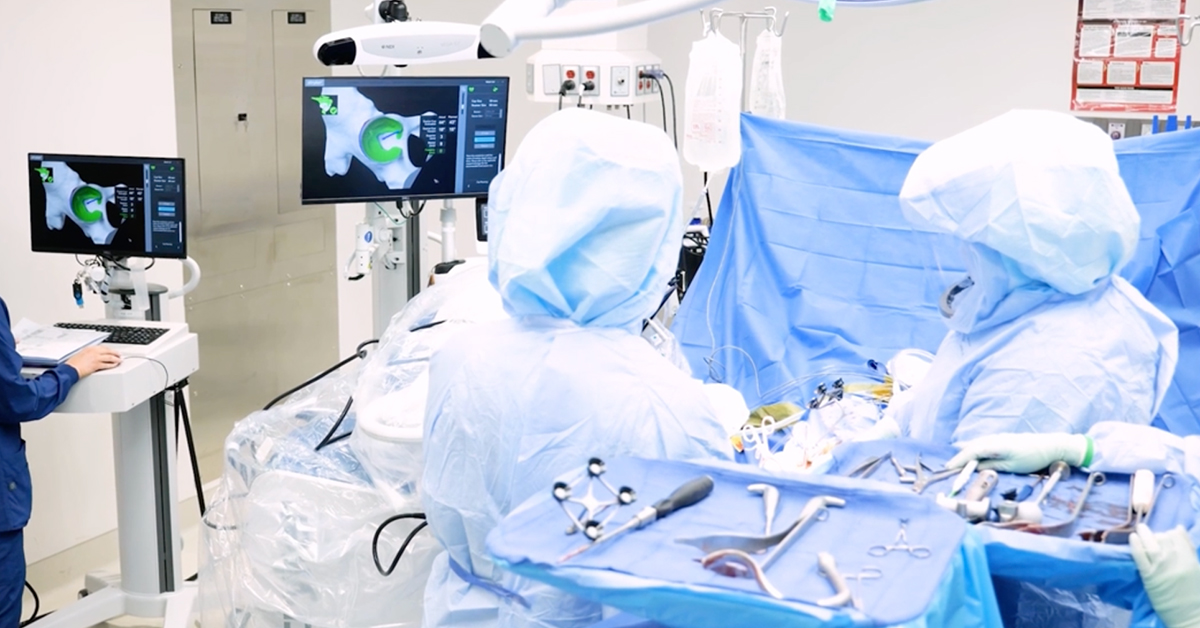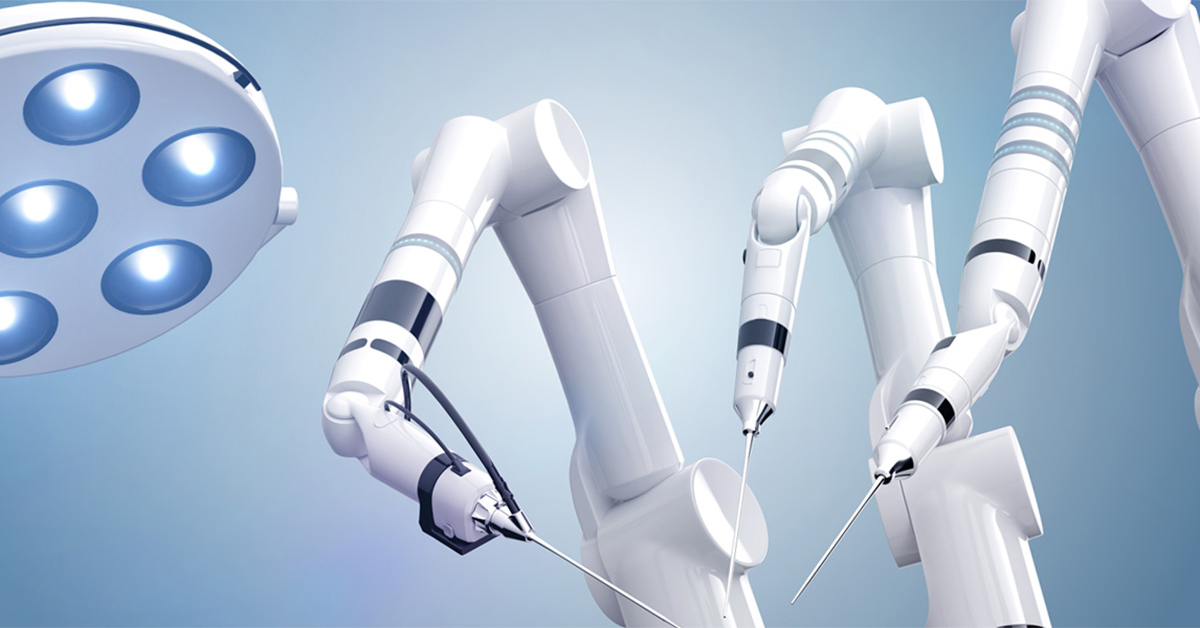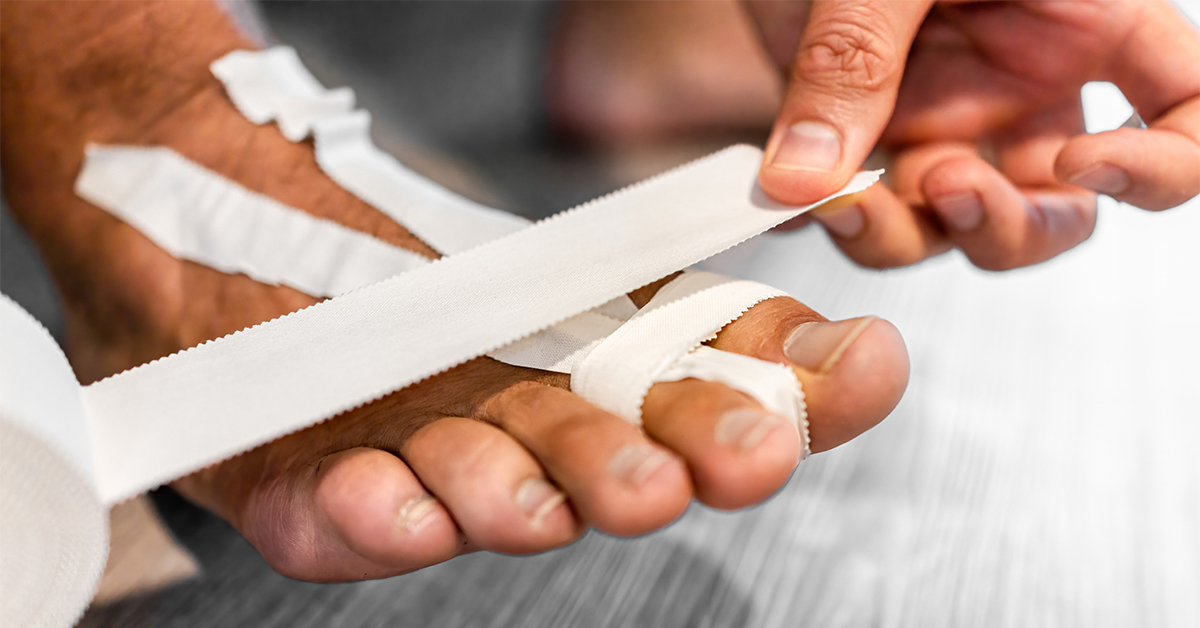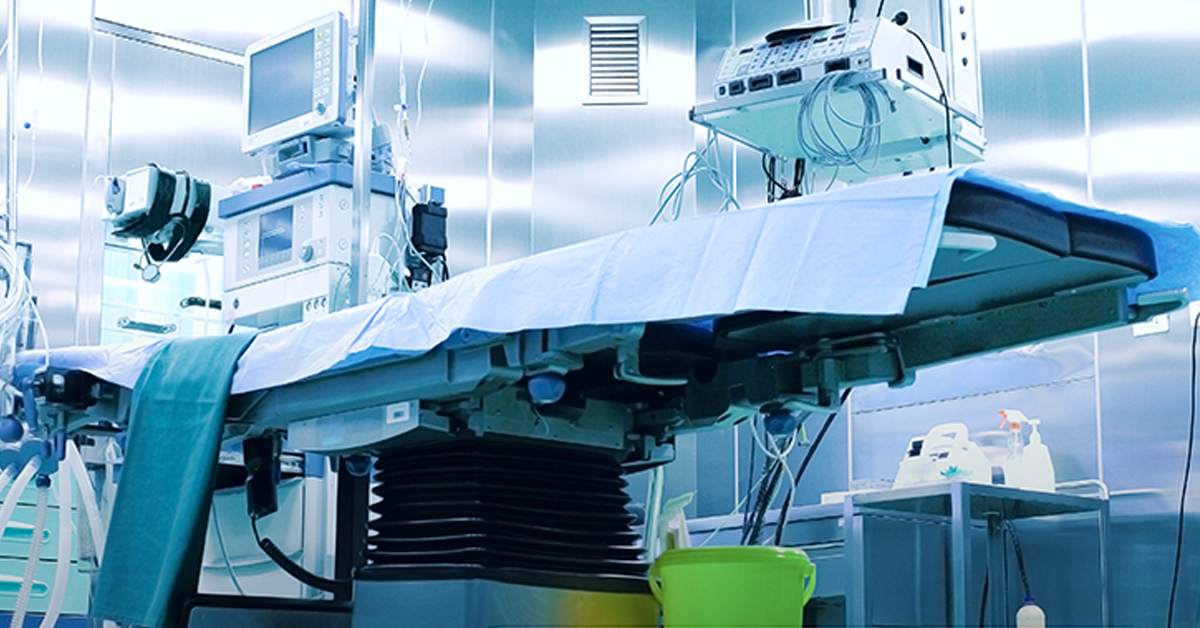Joint pain can make even the most mundane tasks feel like climbing a mountain. When medications, physical therapy, and other treatments no longer bring relief, surgery might become an option worth considering. And joint surgery just got a whole lot more interesting with the latest innovations. If you never thought you’d see a robot in the operating room, think again and read on to learn just how beneficial it can be. This technology’s groundbreaking status is well-earned, as it offers substantial benefits.
What is robot-assisted joint replacement?
Unlike traditional joint replacements, where surgeons rely on their expertise and surgical tools, robot-assisted joint replacement combines the skills of a surgeon with advanced robotic technology. As the surgeon works in tandem with a robotic arm, the operation transforms into a high-precision ballet, each move meticulously adapted to nuances of the body and the joint.
How does robot-assisted joint replacement work? Let’s demystify the idea of a robot and what it does. Here’s a step-by-step rundown.
- Pre-operative planning before surgery—A detailed CT scan is taken of your affected joint. With this 3D model, your surgeon can forge a custom strategy, pinpointing precisely where to make each cut and position your new joint for optimal results.
- Intra-operative guidance during surgery—The robotic arm provides real-time feedback to the surgeon, ensuring that the bone cuts are exact and the implant is positioned correctly. By pinpointing the exact area, surrounding tissues are spared from unnecessary harm, and the risk of post-op issues decreases dramatically.

Join us for this FREE Lunch & Learn session
Welia Health orthopedic surgeon Dr. Chad Holien invites you to this free educational session focused on state-of-the-art technology in joint replacement surgery.
If you are curious about robot-assisted joint replacement, Dr. Holien will break down the procedure, from the technology to the recovery process. Learn how it’s helping patients like you feel better and live more active lives. It’s a great chance to get your questions answered and see if it’s right for you. We’ll cover what makes robot-assisted joint replacement different, what to expect before, during, and after surgery and recovery tips and timelines.
- Date: Wednesday, September 25
- Time: 12:00–1:00 PM
Please arrive 15 minutes to grab a box lunch and find a seat.
- Location: Welia Health – Mora
Can’t make it in person?
No worries! You can register to attend online. We’ll send you a link and you can participate from your computer or tablet. All you need to do is register. We’ll email you instructions on how to join.
We can’t wait to see you there—either in person or virtually!
Advantages of robot-assisted joint replacement
This state-of-the-art technology means real improvements that can significantly improve your quality of life. What does robotic assistance bring to the table? More precise joint placement, for starters, can translate to a joint that remains healthy and functional for a more extended period, with fewer opportunities for complications to arise.
- Less tissue damage—The robotic arm ensures that only the necessary tissues are affected during surgery, which can mean less post-operative pain, a quicker recovery, and faster healing.
- Faster recovery—Because robotic surgery often involves smaller incisions and less blood loss, patients typically experience a shorter recovery time. Less tissue damage during the procedure means less pain and a quicker return to normal activities.
Is robot-assisted joint replacement right for me?
Your health circumstances are all your own, and so is the potential benefit of robot-assisted joint replacement; it may be just what you need. Here are a few general guidelines:
- Severe joint pain: If you’re experiencing ongoing pain that limits your daily life, surgery might be an excellent next step.
- Failed conservative treatments: When non-surgical options like medications or physical therapy stop working, it may be time to think about surgery as an option.
- Good overall health: You’ll want to be in generally good health with no major conditions that could increase surgical risks.
- Active lifestyle: This procedure will help you return to your active lifestyle and do the things that bring you joy.
- Specific joint conditions: If you have osteoarthritis, rheumatoid arthritis, or a previous joint injury, you could be a strong candidate.
- Cost considerations: While robot-assisted joint replacement can be pricier than traditional methods, the potential long-term benefits may outweigh the initial costs.
The best way to know for sure if a robot-assisted joint replacement is for you is to talk with your orthopedic surgeon, who can review your medical history, perform a physical exam, and, if needed, order imaging tests to see how advanced your joint issues are.
Call Welia Health at 1.800.245.5671 or use MyChart to schedule an appointment.













